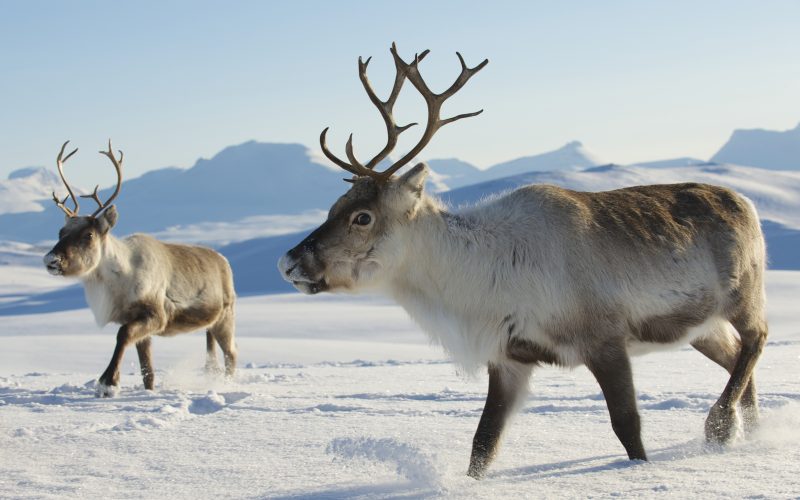
Courtesy Photo
Reindeer are especially adapted to their harsh environment. Their noses are designed to warm the air before it even enters their lungs. They can do this because of special nasal bones that increase the surface area of their nostrils.
Most of us know about reindeer. But Santa’s eight reindeer with rhyming names didn’t become legend until 1823 with “The Night Before Christmas,” a poem first published anonymously in a newspaper. Rudolph didn’t arrive in the story until 1939 in Robert L. May’s children’s book. While science hasn’t yet proven that reindeer can fly, they can do some other really cool stuff.
Reindeer have had the same basic biology a lot longer than we’ve had Christmas. In North America, they’re also called caribou. In the popular children’s book and movie, The Polar Express, those caribou covering the tracks are reindeer, too. Sadly, one subspecies, arctic reindeer (Rangifer tarandus eogroenlandicus) have been extinct since 1900. Because of human overhunting and a warming climate, the ranges of many reindeer populations have shrunk. Reindeer still lived in southern Idaho in the 19th century, but no longer.
Not just males grow antlers: in most reindeer populations, the females also grow them, making them the only antler-wielding females in the deer family. Females don’t lose their antlers until summer, so it’s possible Santa has an all-female team!
They’re likely the only mammals that can see ultraviolet light, helping them to pinpoint urine or white fur against the blinding arctic snow. They also have special hooves that provide them good traction during the wet summers and good grip during slippery icy winters. Because many populations migrate and swim across large bodies of water, their fur coat traps air and keeps them both well-insulated and buoyant.
Reindeer are especially adapted to their harsh environment. Their noses are designed to warm the air before it even enters their lungs. They can do this because of special nasal bones that increase the surface area of their nostrils.
One of their favorite foods is called “reindeer moss” and they’re frequently seen digging in the snow using their hooves. However, this moss is actually a lichen, and while it’s cold-hardy, it can also grow in hot climates and even here in Arkansas (you can gather it and leave some out along with the milk and cookies if you wish). Reindeer have a unique enzyme, lichenaze, that enables them to eat lichen. They will also feed on lemmings, fish and bird’s eggs in the spring, although they are herbivores and ruminants, with a four-chambered stomach.
While they don’t necessarily travel the world, certain populations migrate further than any terrestrial mammal on the planet, over 3,000 miles in a year. They can travel over 30 miles in one day and run at speeds up to 50 miles per hour. According to “Animal Migration” written by Ben Hoare, a one-day-old caribou or reindeer calf can already outrun an Olympic sprinter!
There are too many great facts about reindeer to fit into a column, so check out a book or look them up online to learn more about their biology and ecology. It might even give you bonus points with Santa.
Amanda Bancroft is a Master Naturalist and volunteers with her husband Ryan for their solar-powered online educational center on how to make a difference with everyday choices at: www.RipplesBlog.org.










